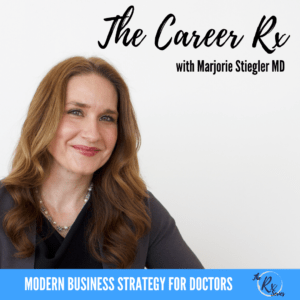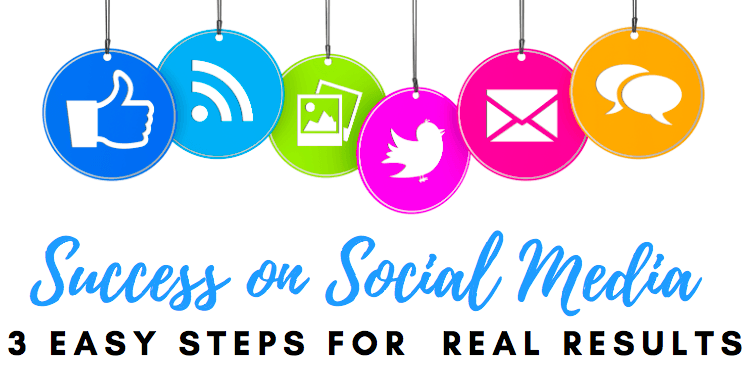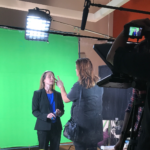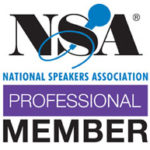
Is Linkedin Premium really worth it in 2023? What does the paid version of LinkedIn do, and should you buy it?
The short answer is maybe – because it depends on how you’ll use it. So, listen for an overview of top LinkedIn Premium features and how to use them.
In this episode of The Career Rx we’ll discuss:
- The top five reasons LinkedIn Premium might be worth the investment
- Key Linkedin Premium features for job seekers that really can help!
- How LinkedIn Premium enhances networking, even when you’re not actively looking
Today I take a deep dive into some of the most useful features of LinkedIn Premium for 2023. I discuss the best uses for LinkedIn Learning, InMail, profile viewing, the “featured applicant” function, and what you can learn from job postings with the premium features. If you’re ready to get serious about a career transition, and you’re on the fence about getting the paid version of LinkedIn, this episode is for you.
In this Episode:
[4:30] LinkedIn Learning – a treasure trove explained
[7:35] How to reach out (and get replies) with Premium features
[14:00] Highly valuable features within job postings
[18:45] Hacks for making your profile even better for the jobs you want
Links and Resources:
Industry Insider – 12 hours of CME, learn exactly how to land a rewarding nonclinical career without a new degree, connections on the inside, prior experience, or a pay cut
LISTEN TO THIS EPISODE:
SUBSCRIBE TO THE CAREER RX PODCAST:
Get every episode on your preferred player…
Apple Podcast | Google Podcast | Spotify | TuneIn + Alexa | iHeart Radio
More for you:
The Speaking Rx 12 hours of CME, learn the business of professional public speaking to establish yourself as a thought leader you are, and get paid for your speaking expertise
The Branding Rx – 18 hours of CME, mastering digital strategies for advancing your career, building your business, and growing your professional brand
Launch an Online Course on Any Budget – know your course will sell before you spend any time or money to create it; plus, the exact logistical blueprint to get paying customers and a way to deliver your course without spending a dime (ready to scale up when you are!)
Let’s connect!
Twitter | Instagram | Facebook | LinkedIn
Thanks for joining me on this episode of The Career Rx!
Please be sure to leave me a review on Apple [here’s a 60 second step-by-step video] and don’t forget to send me your questions so I can answer them and give you a shout out on a future episode.
TRANSCRIPT: Episode 111 – Is LinkedIn Premium Worth It in 2023?
Hey gang, welcome back. Today I’m going to be talking about LinkedIn premium and answering the question which I am often asked, is LinkedIn premium worth it? And I’m thinking about this, here we are in early 2023. And so of course, because many online platforms, social media platforms change in their functionality, their price and so forth.
Quickly, I just want to let you know that it is January 2023, as I’m looking at this question, and so my answers are based upon what I understand from LinkedIn premium today.
And of course, that could change my best tip for for people about LinkedIn because you know, I have many episodes that include strategy on LinkedIn is sometimes it won’t look or feel exactly the same way as I’ve described things in the past, because LinkedIn has changed things, but they do have really fantastic user guides.
You know, if you just click on the help button and tell it what you want to know how to do, or a feature that you want to find, I have found that more than any other platform, LinkedIn has really, really clear and,and helpful instructions on literally anything you’d ever want to do.
So at some point, this podcast episode will be out of date, but you can always find the most up to date things directly from LinkedIn itself.
Now for all job seekers, and especially for physicians who are looking at career transitions. I think LinkedIn is one of the most important tools around and especially for physicians who’ve been in academics or clinical medicine, I know we really underutilized LinkedIn. So it might be something that is not all that familiar to you.
And in fact, for most of the students who take Industry Insider or coaching clients of mine, it’s actually something that they may not even have a profile established at all, let alone using LinkedIn premium or using any sort of advanced strategies on how to leverage the power of that platform.
But as we dive into quite a bit in Industry Insider, which if you haven’t checked it out, it’s my CME course on how to transition into the biotech and pharmaceutical industry, from clinical medicine.
And even if you don’t know anything today, you don’t know anybody today, come check it out. Details are in the show notes.
But in any case, we talked quite a bit there about LinkedIn and how to use it, not only to showcase yourself and to network with other people, and to get found by recruiters and to find jobs, I mean, it’s really, there are almost limitless benefits to being active on LinkedIn once you know how to do it, right.
But in any case, today, I’m going to be focused specifically on LinkedIn premium, which is a paid service, right? It’s the paid part of LinkedIn, as I believe, $29 or so a month for, for job seekers, essentially. And so what would be the benefits of signing up to do that? I’m gonna give you five reasons, although I’m sure there are more that I think are worthwhile.
At least during the periods where you’re actively looking for career development or career transitions, I personally have it and I keep it going kind of around the clock, it may be something that’s tax deductible, check with your tax professional.
But I personally like it, I keep it going all the time, you may choose not to but you can turn it on and off. But definitely during the time when you are trying actively to apply for jobs, I think it’s really worthwhile.
- Okay, from the perspective of your own professional development, you want to learn new skills, be able to demonstrate some of those skills, and otherwise develop yourself as a professional.
In a career transition. One of the things I think is extremely valuable is LinkedIn learning, which is included in the Premium Package. LinkedIn learning is a collection of over 15,000 courses. And there’s all kinds of topics within there.
And some of them are more sort of soft skills, leadership skills, that kind of thing. Some of them are really concrete, hard skills for which you can even earn a certificate of completion which can then be displayed on your LinkedIn profile, or included in your resume. If it’s relevant.
I personally just love learning new things. I’d much rather, for example, listen to a podcast, you know, on a walk than I would listen to music. So this is really up my alley. It may or may not be yours, but I think it’s really really fantastic.
It’s a great way to learn new things in also, as with all social platforms, you’ll you’ll be able to see a little bit of who else is watching or learning the same things that you are learning about, which may give you an icebreaker if you want to reach out to some people in your network. Hang on, because you’ve done something, and you have a, you have a common interest and you see it right there.
- The second thing that I think is really, really valuable is LinkedIn, which they call InMail. So this is essentially within LinkedIn messages. But as you know, if you’re not connected to somebody already, then you have to request for their connection and the number of characters that you have to have a little message, when you reach out to become connected, is really quite limited in mail allows you to send essentially an email, you know, it can be a longer email within the LinkedIn platform.
And this is much more likely to be read than it would be if you for example, if you have somebody that you want to reach out to at a company and you don’t know them, and you don’t have a personal connection to them. So your other alternative would be a cold email to their actual email address, assuming you could find it, or a cold phone call, assuming you could find a phone number.
But that all takes a lot of work. And you never know if it’s going to be answered if it’s even going to be seen. But within LinkedIn, it will be seen and according to LinkedIn anyway, your two and a half times or so more likely to get a response to a LinkedIn InMail than you are to a normal cold email.
One of the most important things a person can do when they’re looking to advance or pivot their careers is to increase the number of people that they talk to who are in the kinds of careers or in the industry that they aspire to join.
And so whether this is for an informational interview, it’s just, you know, to have some connections, it’s to ask questions, perhaps it’s about a job or an opportunity.
In particular, this is how a person grows their network. And when you don’t know, folks, and you’re just getting started. So really, really helpful that anything that can increase the likelihood someone will see it and respond to it.
And if you’re thinking that feels spammy and stuff don’t, because LinkedIn up this is, this is how people communicate. It’s not uncommon to receive emails or LinkedIn, in males rather from people.
And so it’s not, it’s not at all out of the norm. And, and indeed, this is how people connect with other people that they don’t know, in business and in industry. So it’s probably not something you’re doing today. But it’s something you should be doing. And LinkedIn premium makes it easier to do that.
- Okay, the third reason that I think while you’re searching for job LinkedIn premium is worth it, in my opinion, is because it will tell you who has viewed your profile, then you might wonder, like, why do I care who has viewed my profile, but you know, there is a vast, vast world of recruiters and talent professionals out there, always scouring LinkedIn for people that they may want to get to know and that they may think are suitable for a open position that they have, they may want to recruit people.
Especially as you’re building out your profile, and you’re making it more and more attractive to recruiters, it can be really handy to see who has come to see you. Because if they’ve come to your profile, they’ve checked you out if they haven’t dropped you a message yet, you can reach out to them.
You might be thinking, well, if they haven’t reached out to me, then they’re not that interested in me. And you know that that could be true, right? I don’t know the quality of your profile. But what I definitely know, and the reason that I think this is a value is you know, it’s that old saying right?
You don’t know what you don’t know, when you open your LinkedIn today. And you think to yourself, I’d love to find recruiters in the industry that I aspire to join, and I’m going to reach out to all of them, and I’m going to pound the pavement, you know, virtually, and, and really, you know, put put my name out there, but you don’t know who to reach out to, it’s not really clear who those recruiters are.
And so when you have a list, essentially, of all the people who’ve come to check you out, then you’re getting sort of a snapshot. Now you don’t need to reach out to all of them. But you are getting essentially contact info names of people that you otherwise wouldn’t even know exist.
And so I do think it’s helpful, they’re basically leads for you. I have said in Industry Insider and on this podcast, too, I’m sure that before you start to utilize some of these tools, it is really worthwhile to have an effective and compelling and interesting LinkedIn profile established so that when people do come to check you out, they don’t pass you by right.
I think that’s very important. But even if they have passed you by, if you go ahead and do some outreach, you know, it’s these people’s jobs to have discussions with professionals.
And so I think you’re quite likely to be able to get responses from people and now you have sort of a an inside track like you don’t have so much of an unknown now you’re going to know names and ways to contact people that you otherwise did not know existed and did not know that they are out there looking for candidates
- Okay, number four, which I think is extremely cool is the ability when you apply within LinkedIn to click on a box that checks you as a “featured applicant”.
And what this means, essentially, is when you submit your application through the LinkedIn portal, it gets highlighted to the job poster. So the company and the person, that recruiter who has posted the job is going to see, you know, a list of all the results of all the applications that have come in, and they’re going to see yours on a highlighted row at the very top.
So your job application will literally be ahead of everyone else’s, and therefore boosted and highlighted, really increasing the chance that it will be viewed.
And as we talk about a lot, again, on this podcast, and in industry insider, one of the biggest hurdles really is just getting your information in front of the eyeballs of someone who’s in a position to hire you.
That is one of the greatest rate limiting factors in terms of career transitions in the first place. So you know, many people’s applications.
Don’t ever make it through some of the software screeners. And oftentimes, even if there is no screener, and it’s all a human being, they will get so many applications there, they spend five seconds, seven seconds, just a quick, quick glance. So having yours highlighted at the top, I think anything that boosts your chance of being viewed is a good thing.
- Okay, the final. The fifth and final sort of reason that I think premium is worth it, especially while you are searching is because of the added features that you have when you’re looking at job postings.
So if you’ve done a search or looking for jobs, you know, you’ve put in a job title or you’ve put in a company around you see the list of the opportunities, and you click on one you’ll, for people who are not premium subscribers, you’ll just see you know, a little blurb about the company, a little blurb about the job responsibilities, requirements, and the way to apply write some instructions.
And you might see compensation, I think that used to be exclusively in LinkedIn premium. But now I believe there are several states that have passed laws that require salary information to be posted with jobs that can be done in those states. So it might be that you’re, you’ll start to see these in job postings in general.
And I don’t want to take too much of a detour here. But I’ll say take those with a grain of salt very often, it’s only the salary, the base salary that’s required to be posted. And that does not include what is often a substantial amount of compensation and industry, such as annual cash bonus, stock, stock options, things like that, which can make up, you know, 30%, 40%, 50%, or even more of your total compensation.
So base salary is often very, very misleading, in that it underestimates total compensation. But anyway, with premium, you can see some of the pay ranges based on LinkedIn data. The other thing you can see there is how you compare to other applicants who have applied to that same job. So you can see how many have applied, which is helpful.
But most importantly, you can see, you know, what, what’s the level of seniority of the people who are applying and that might help you to kind of gauge especially in a new industry, whether or not you, you know, you’re on target in terms of is this an an appropriate sort of, quote, unquote, entry level, as a physician, you’re obviously highly educated.
But if it’s going to be your first job within industry, like looking for that appropriate level, to increase your likelihood of being successful. And then when you look at the education level of the other applicants that will tell you what kind of degrees they have.
And that will be really helpful to understand, you know, is there something that everybody has that you don’t, that might just be food for thought it may not be the right job for you. Or it might be something that you might consider pursuing if it’s a certificate or some other degree, that helps you understand how you stack up.
And then it helps to list the most common skills that all the other applicants have, you know, some of the job profiles will tell you what their top skills that they’re looking for are. So if they tell you their top 10 skills, and then you can see if you have those skills, and if you have them, they certainly should be listed on your LinkedIn profile, that now you can also see, within premium, the skills that the other applicants have.
So this is sort of like competitive intelligence, right? It’s research on your competition, what did they have listed as skills? And then that might give you some ideas about whether or not you have those skills, in which case you should be talking about them and highlighting them or thinking about whether or not there’s a way for you to develop those skills. also a little bit. So I think that is very cool. Seeing how you stack up to other applicants is really, really cool.
The other thing that I’m seeing is that I, that I’m, I guess I hadn’t noticed before and in my view it says premium on it. So I believe this is part of the premium, although I don’t see it listed on LinkedIn is a sales page.
But as I’m looking at a job right now, as I’m recording this podcast, I see that within the job description, there is a little box that is labeled as a premium box, it’s a little gold box. Just like the competitive information about the other applicants is labeled with a little premium box, there is a premium box that says meet the hiring team, and it tells me who the recruiter is.
And I can directly message that recruiter just from right within there. It also tells me what mutual connections I might have with that recruiter. So that is a goldmine. You know, sometimes these job postings, even on regular LinkedIn, will be posted by the recruiter instead of by the company.
But when they’re posted by the company, it’s sometimes not clear who to contact, you can only just apply through the company website or through the LinkedIn portal. And that feels like sending it into a black hole.
And as we’ve talked about, in many ways it is. But if you can reach out directly to the person who is doing the screening or doing the hiring, that’s really fantastic. So for me, that box alone is worth the price.
So there you go for about $30 a month, that is my thinking on what is the sort of most value add for why a person would want to sign up for LinkedIn premium and 2023. Again, for me, it’s that ability to see who’s come by my profile, to be able to send in mail rather than the really short message that accompanies a connection request or trying to do a cold call or cold email that’s always really hard.
The amazing content within LinkedIn learning now in full transparency, my company gives me free access to the LinkedIn learning component, which is amazing.
So I would have that even if I didn’t have a LinkedIn premium, because the company benefits. But if I didn’t have it through my company, because I have it, and I’ve used it, I can vouch for it. That to me is well worth it.
The ability, of course, to highlight yourself as a featured applicant, I think, is really, really important. And then all of that extra information that you get within specific job postings, about the other applicants and what kind of skills, education degrees and so forth, they have, I think can be very, very helpful, especially as you’re trying to build your profile.
Because I mean, keep in mind, what you’re trying to do here is you’re trying to build a profile that is going to set you up to represent a specific skill set that is going to be attractive to the industry that you intend or aspire to join.
So it’s going to look different than what your profile does today. And for many people, that’s very perplexing. Like they are not sure what skills should I put on there? What skills are they even looking for? What skills do I have?
These are like really important questions to answer. And it can be very helpful to have sort of a cheat sheet for inspiration. So you can ask yourself, “do I have experience with this?”
If everybody has some, maybe I should get some work on the on the flip side of that, if you see that almost none of the applicants are physicians and that you know, 90% or something have bachelor’s degree that might be assigned to you that regardless of the job title, that might have stood out to you as an appropriate place for you to look that maybe that is not the right job for you, that you either are overcome overqualified or are not qualified, like if the undergraduate degrees in economics or something.
If all of the applicants have an undergraduate degree in economics or something, maybe you’re just not qualified at all, and, and perhaps if there are no other physicians applying, maybe you are overqualified.
And I don’t mean that to necessarily be like a decision maker for you to dissuade you from applying. But it’s helpful to kind of get a sense of what kinds of people are applying to these jobs?
And what kind of educational background they have, what kind of skills they have, you know, what’s important to the company so that you can continue to develop your own profile to reflect those things as you have them.
And I suppose this is part of that. But again, the ability to see who the recruiter is, who’s the person on the other side of the dashboard on LinkedIn that’s going to be receiving all of those applications.
When they are submitted through the LinkedIn portal, your ability to just straight up message that person and know who they are, which is not always included on job postings. not always obvious, it’s not included in the text, it might be posted by the company, many people have no option except to submit the black hole.
To me, that is worth the price of admission alone, the ability to outreach to an actual human being who’s in a position to make actual decisions about whether to progress you to an interview, that is really, really crucial. And especially for people who feel like they don’t know anybody in industry, that is a really important feature.
Now, don’t get me wrong, I don’t think that that’s necessarily enough. I mean, it does not replace your traditional networking, which again, I think is important for InMail. And for other strategic ways that we talk about in industry insider for how to use LinkedIn, and how to build your network.
Because the network that you want to build, yes, you want to talk to recruiters, and you want to talk to in house talent, like the people who are the HR in those companies. But even more than that, you want to begin to build a network of people who are in a position to actually hire you to be your future boss, or who are colleagues with the person who could be hiring you.
And those often are other physicians, right, you are looking for your peers and your potential eventual bosses to grow your network.
So yes, it’s important to be able to reach out to recruiters, I think that’s really key. But don’t forget, then probably the most important thing is to grow your network with those people who will be your future colleagues.
And we talk all about a framework and a step by step of how to do that. Within Industry Insider, you don’t need to know anybody today in order to grow a robust network that eventually lands you a job.
It takes a little effort, but it’s actually pretty easy. And you can absolutely do it.
Before I wrap I should say as a disclaimer, you know, I don’t have any relationship with LinkedIn, I don’t have any like referral, or affiliate situation with LinkedIn. And certainly it’s up to you to decide whether or not you want to sign up for LinkedIn Premium and pay that expense.
But as I have been asked all the time, is it worth it to get premium? Is it worth it to get premium? It seemed like a great way to take a look at that in 2023, what’s going on within LinkedIn premium?
And what I recommend for an active job seeker today. Without a doubt, yes, I would, even if it’s just for a short period of time, of all the things that you would want to invest in while you’re looking to advance or transition your career, of all the ways in which you might spend money. I mean, this is a relatively small amount of money with a lot of potential benefits.
So I would say absolutely yes, but I don’t have any affiliation with LinkedIn whatsoever. I just wanted that to be clear.
Okay, that’s it for today. Bye for now.
Before you go, please leave me a review on Apple Podcasts, share and subscribe to this podcast. Your support makes all the difference and it truly helps this information reach someone who may really need it. Until next time, thanks for listening.







